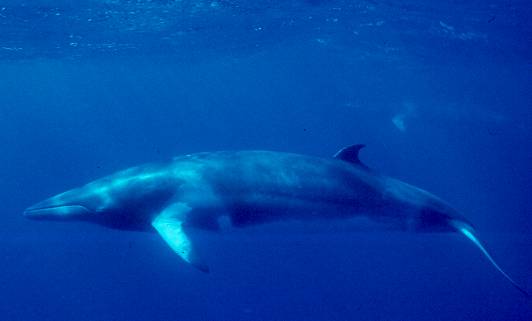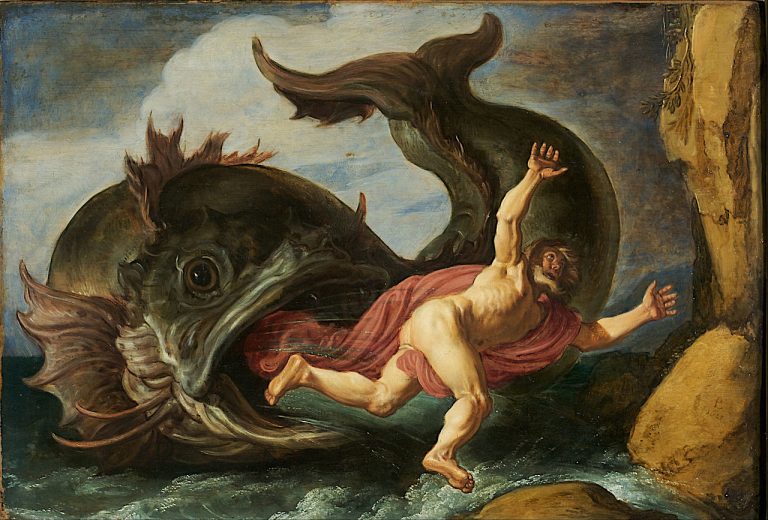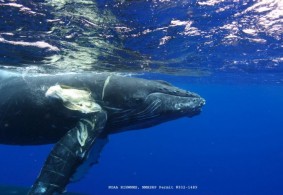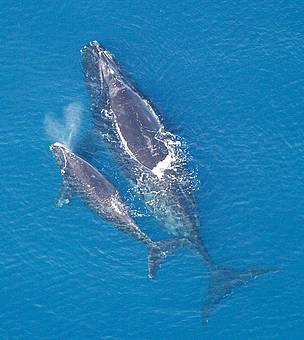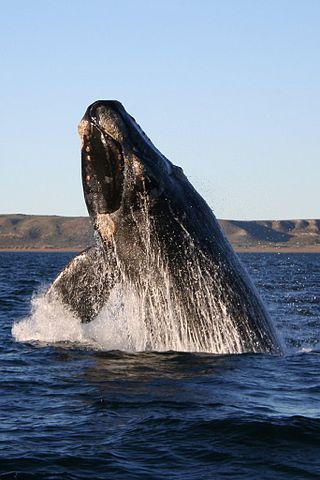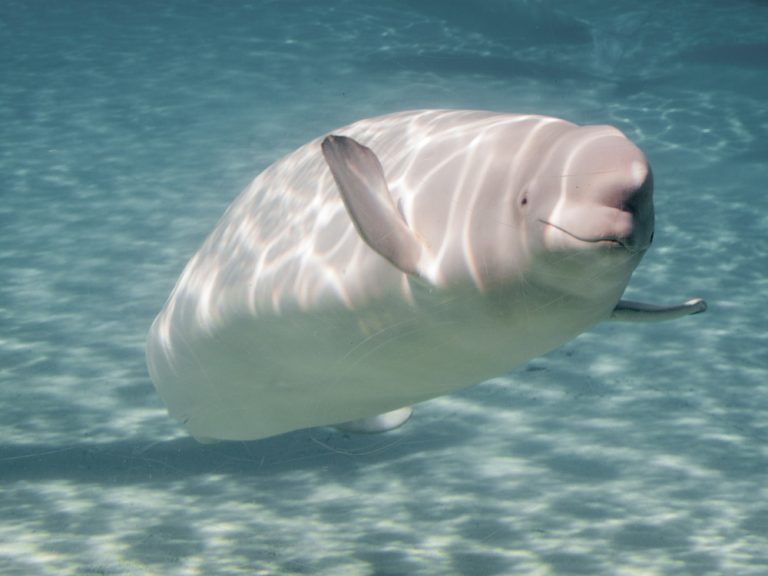Species Profile: The Bowhead Whale
The Bowhead Whale is one of the largest whales on Earth and it has the largest mouth of any creature on the Planet.
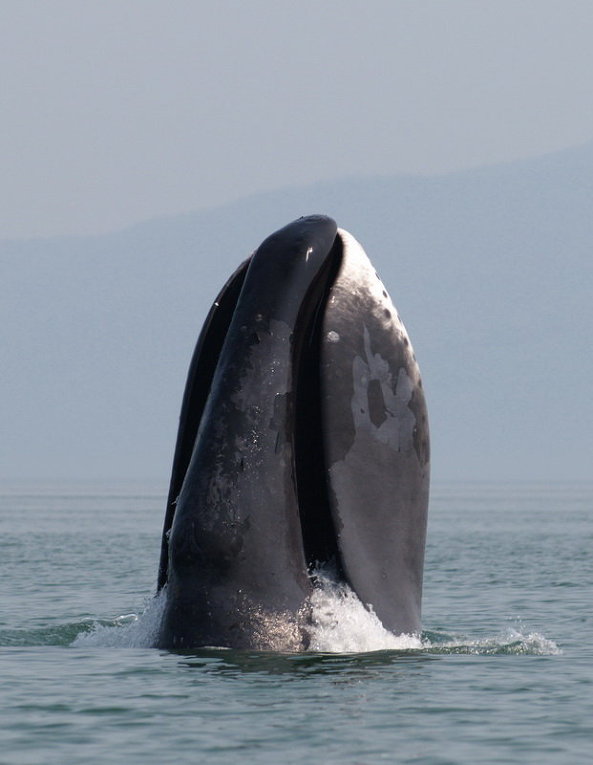
The Bowhead Whale is one of the biggest whales on earth and it’s a species belonging in the Balaenidae family. They live exclusively in the waters of the Arctic and sub-Arctic regions of the Earth.
It has a dark, stocky body, with a white patch under its lower jaw and it lacks a dorsal fin. Their heads are large, triangular, and so strong that they use them to break through thick sheets of ice in order to breath. Some Inuit hunters have even reported seeing bowhead whales breaking through up to 60 cm (24 in) of solid ice.
This whale gets its common name from its strongly bowed lower jaw and narrow upper jaw. These are filter feeders: instead of teeth, they have baleen plates for filtering prey after gulping large amounts of water. Interestingly, the bowhead whale has the largest baleen plates of any whale: about 3 m (9.8 ft).
An adult bowhead whale can spout a jet of water/air up to 6.1 m (20 ft) high through its blowhole. Also, they have the thickest blubber of any animal, up to 43 to 50 cm (17 to 20 inches) thick.
Like many very large whales, bowheads are not very social animals. They travel alone or at the most they may be sighted in groups of up to six individuals.
Bowhead whales suffered much the same fate as many other very large whales. They were direct targets of the whaling industry and were almost devastated till a 1966 international moratorium was passed to protect the species.
Fortunately, their population has recovered gradually since then and the species is now rated as Least Concern by the IUCN.
The Bowhead Whale has the distinct position of the animal with the largest mouth on the Planet.
1) Scientific Name
Balaena Mysticetus
2) Scientific Classification:
- Kingdom: Animalia
- Phylum: Chordata
- Class: Mammalia
- Order: Artiodactyla
- Family: Balaenidae
- Genus: Balaena
- Species: Balaena Mysticetus
3) Life Expectancy
This species ranks among the longest-living mammals, often living for over 200 years.
4) Average/Maximum Length
There are many claims of bowhead whales measuring up to 20 meters and above but the most reliable records show that females average 18 meters (59 feet) and males 16.2 meters (53 feet) long. Females of the species are typically larger than the males.
5) Average/ Maximum Weight
Between 75 and 100 tons.
6) Maximum Swimming Speed
These whales are slow swimmers, and they will normally travel at about 2 to 5 km/h (1.2 to 3.1 mph). Although, when fleeing from perceived danger, they could go up to 10 km/h (6.2 mph).
7) Interaction With/Danger To Humans

Like other large-sized whales, commercial whalers once hunted bowhead whale for its blubber, meat, oil, bones, and baleen. Also, just like the Right Whale, it swims slowly and floats after death so it’s easier for hunters to harvest what they need from the carcass.
Basque whalers were the first to go after these whales in the 16th century. Thereafter, other nations joined the hunt and by the mid-16th century, whale populations in areas like Spitsbergen were eliminated.
Before long, hundreds of ships at a time would go after bowhead whales from one part of the ocean to the other, wiping them out as they went.
Whalers took an estimated 18,000 Bowhead Whales in the Sea of Okhotsk (near Japan and Russia) alone between 1847 and 1867.
Today, though commercial whaling has stopped, the native peoples of North America are allowed to hunt controlled numbers of whales on a subsistence level only.
The principal predators of bowheads today remain humans and orcas (killer whales).
8) Reproduction Details
This species are very vocal, and they use low frequency sounds to communicate when they travel, feed, and socialize. But these calls become more intense during mating season.
Females will mate with multiple male partners when breeding season starts from March till August. Gestation period lasts for 13 to 14 months and mature females will bear a single calf every three to four years. Mothers nurse their calves for about one years and the calves are born with a thick layer of blubber to survive the cold waters.
Newborn calves typically measure 4 to 4.5 meters (13 to 15 feet) long, and weigh approximately 1,000 kg (2,200 lbs.).
9) Diet/Hunting Pattern Of The Bowhead Whale
These whales have a formidable feeding tool: their large heads. In fact, their heads are so large that it covers about a third of their total body length.
Since they are filter feeders, they feed by swimming forward with their mouths wide open through schools of prey like zooplankton (copepods and amphipods), and many other varieties of small crustaceans. In a day, they can consume up to 1.8 tons of food.
10) Alternative Names
- Greenland Right Whale
- Arctic Whale
- Steeple-top
- Polar Whale
- Russian Whale
11) Population And Conservation Status
Though these whales listed as Least Concern by the IUCN, some populations are under pressure and are threatened to various degrees.
Consequently, the NOAA (the National Marine Fisheries Service) of the USA lists some populations thus:
- Svalbard population – Critically endangered
- Sea of Okhotsk Population – Endangered
- Baffin Bay-Davis Strait Population– Endangered
- Hudson Bay-Foxe Basin Population – Vulnerable
- Bering-Chukchi-Beaufort Population– Lower Risk
There are presently no exact figures for the estimated numbers of bowhead whales. However, the WWF estimates that there are about 10,000 of them in the Oceans.
12) Ancestry And History
This whale bears so many characteristics in common with right whales that they were all once classified as the same species. Though it has its own distinct genus today, its closest relatives are still the right whales of the North Atlantic, North Pacific and Southern Ocean populations.
13) Distribution and Habitat
This is the only baleen whale that spends its entire life in the Arctic and sub-Arctic waters. They are migratory whales and the Alaskan population for instance, will spend the winter months in the southwestern Bering Sea then migrate northward in the spring.
They occur in separate populations around Northern Europe, between Canada and Greenland, in the Hudson Bay area, the Okhotsk Sea, and the Bering, Chukchi, and Beaufort seas.
Their range generally follows climate changes and on the forming or melting of ice.

